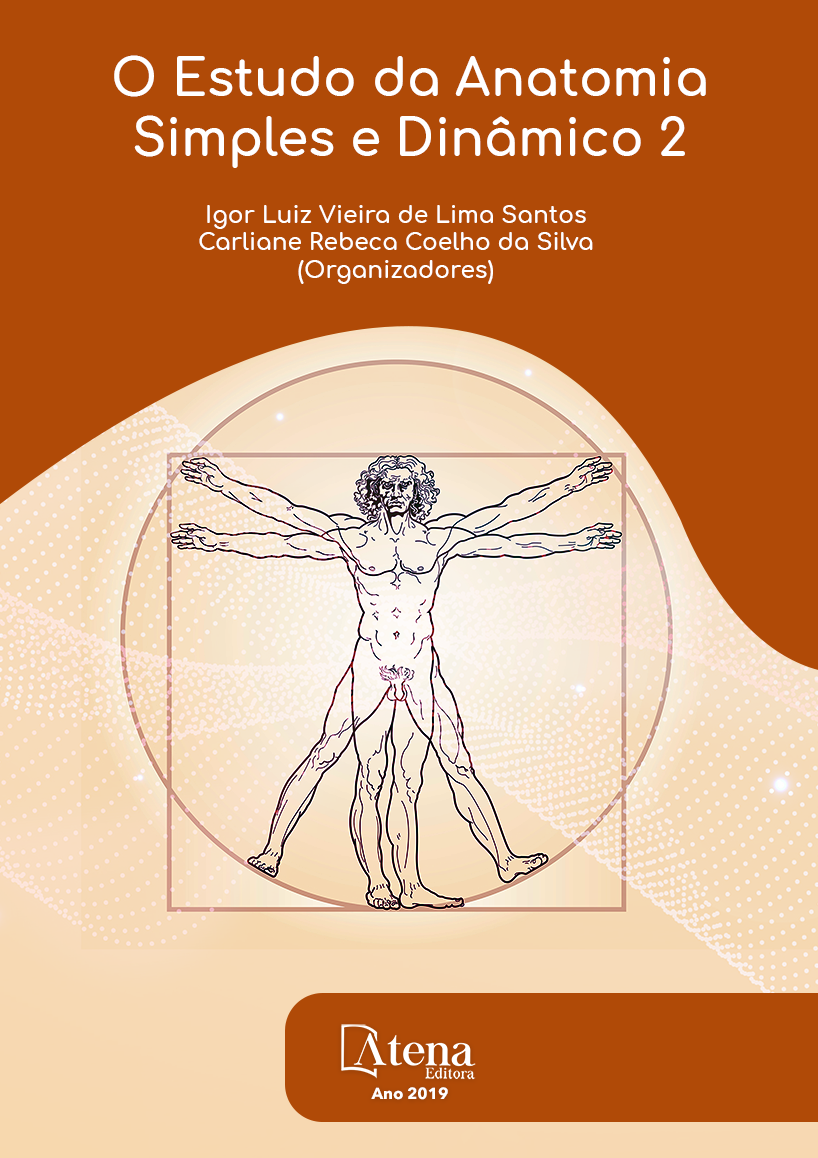
ANÁLISE ESTRUTURAL E MORFOMÉTRICA DA MATRIZ EXTRACELULAR DO TENDÃO DO MÚSCULO EXTENSOR CURTO DO POLEGAR EM CADÁVER HUMANO
A matriz extracelular é uma rede de
macromoléculas formadas por componentes
fibrosos e não fibrosos. Dentre os componentes
fibrosos, estão as fibras colágenas e as
elásticas. O objetivo deste trabalho foi analisar
esses dois tipos de fibras da matriz extracelular
do tendão do músculo extensor curto do polegar
de cadáveres humanos adultos, identificando
diferenças morfológicas e morfométricas em
regiões que exibem propriedades biomecânicas
distintas. Foram utilizados seis cadáveres
humanos adultos, procedentes do Laboratório
de Anatomia da Universidade Tiradentes, cujos
tendões extensores curtos dos polegares foram
dissecados desde sua inserção proximal até
a distal. Os tendões dissecados foram fixados e submetidos a cortes histológicos
e corados pelo método de Verhöeff, hematoxilina-eosina, tricromo de Masson e
picrossírius-hematoxilina. As análises morfológicas mostraram que a região distal
do tendão apresentou uma estrutura fibrocartilaginosa com células arredondadas
semelhantes a condrócitos e fibras colágenas mais espessas e menos ordenadas.
Enquanto na região tendínea os feixes de colágeno apresentaram-se birrefringentes,
bem organizados, dispostos paralelamente entre si e entremeados por fibroblastos.
As fibras elásticas, por sua vez, foram observadas principalmente entre os feixes
de colágeno na região tendínea e ao redor dos vasos sanguíneos. As medidas
morfométricas demonstraram um maior nível de colagenização nas regiões de tensão.
ANÁLISE ESTRUTURAL E MORFOMÉTRICA DA MATRIZ EXTRACELULAR DO TENDÃO DO MÚSCULO EXTENSOR CURTO DO POLEGAR EM CADÁVER HUMANO
-
DOI: 10.22533/at.ed.3311925093
-
Palavras-chave: Matriz extracelular, Tendão do polegar, Colágeno, Fibras elásticas, Birrefrigência.
-
Keywords: Extracellular matrix, Thumb tendon, Collagen, Elastic fibers, Birefringence.
-
Abstract:
The extracellular matrix is a network of macromolecules formed by
fibrous and non-fibrous components. Among the fibrous components are collagen
and elastic fibers. The objective of this work was to analyze these two types of fibers
of extracellular matrix of the extensor tendon muscle of the thumb of adult human
cadavers, identifying morphological and morphometric differences in regions that
exhibit distinct biomechanical properties. Six adult human cadavers were used, from
the Anatomical Laboratory of Tiradentes University, whose short extensor tendons of
the thumbs were dissected from their proximal to distal insertion. The dissected tendons
were fixed and submitted to histological sections and stained by the Verhöff method,
hematoxylin-eosin, Masson’s trichrome and picrosyreus-hematoxylin. Morphological
analyzes showed that the distal tendon region presented a fibrocartilaginous structure
with rounded cells similar to chondrocytes and thicker and less ordered collagen fibers.
While in the tendinous region the bundles of collagen were birefringent, well organized,
arranged parallel to each other and interspersed by fibroblasts. The elastic fibers,
in turn, were observed mainly between the bundles of collagen in the tendon region
and around the blood vessels. Morphometric measurements showed a higher level of
collagenation in the regions of tension.
-
Número de páginas: 15
- Francisco Prado Reis
- Andrea Ferreira Soares
- José Aderval Aragão
- Ana Denise Santana de Oliveira
- Rodrigo Ribeiro Almeida
- Lucas Amadeus Garcez Costa
- Raimundo Dantas De Maria Júnior
- Víctor Matheus Sena Leite
- Nicolly Dias da Conceição
- Ruan Pablo Vieira Santos
- Vera Lúcia Corrêa Feitosa
- Vera Lúcia Correia Feitosa


